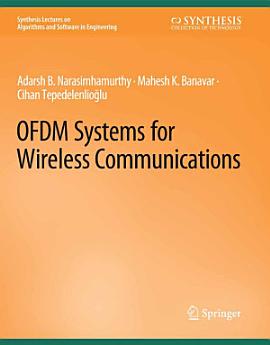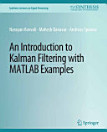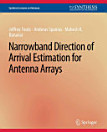OFDM Systems for Wireless Communications
Jun 2022 · Springer Nature
Ebook
68
Pages
reportRatings and reviews aren’t verified Learn More
About this ebook
Orthogonal Frequency Division Multiplexing (OFDM) systems are widely used in the standards for digital audio/video broadcasting, WiFi and WiMax. Being a frequency-domain approach to communications, OFDM has important advantages in dealing with the frequency-selective nature of high data rate wireless communication channels. As the needs for operating with higher data rates become more pressing, OFDM systems have emerged as an effective physical-layer solution. This short monograph is intended as a tutorial which highlights the deleterious aspects of the wireless channel and presents why OFDM is a good choice as a modulation that can transmit at high data rates. The system-level approach we shall pursue will also point out the disadvantages of OFDM systems especially in the context of peak to average ratio, and carrier frequency synchronization. Finally, simulation of OFDM systems will be given due prominence. Simple MATLAB programs are provided for bit error rate simulation using a discrete-time OFDM representation. Software is also provided to simulate the effects of inter-block-interference, inter-carrier-interference and signal clipping on the error rate performance. Different components of the OFDM system are described, and detailed implementation notes are provided for the programs. The program can be downloaded here. Table of Contents: Introduction / Modeling Wireless Channels / Baseband OFDM System / Carrier Frequency Offset / Peak to Average Power Ratio / Simulation of the Performance of OFDM Systems / Conclusions
About the author
Adarsh Narasimhamurthy is a Ph.D. candidate at the School of Electrical, Computer and Energy Engineering in Arizona State University, Tempe. He obtained his B.E. with distinction in 2005 from the Bangalore University, Karnataka, India and the M.S. degree in Electrical Engineering from Arizona State University, Tempe in 2007. Currently, he is a part of the Signal Processing for Wireless Communications Lab headed by Dr. Cihan Tepedelenlio ̆glu and also a member of the SenSIP consortium. Mr. Narasimhamurthy was awarded a Research Assistantship in the year 2006 and the subsequent year a Graduate Teaching Associate position from the Department of Electrical Engineering. His research interests include MIMO systems, OFDM systems, reduced complexity diversity combining techniques and multiuser communication. Mr. Narasimhamurthy is also a member of the Eta Kappa Nu honor society and an IEEE student member. Mahesh K. Banavar received the B.E. degree in telecommunications engineering from Visvesvaraya Technological University, Karnataka, India, in 2005 and the M.S. degree in electrical engineering from Arizona State University, Tempe, in 2008. He is pursuing the Ph.D. degree with Arizona State University, specializing in Signal Processing and Communications, and doing research in wireless communications and sensor networks. Mr. Banavar is a member of the Eta Kappa Nu electrical and computer engineering honor society. Cihan Tepedelenlioglu was born in Ankara, Turkey in 1973.He received his B.S. degree with highest honors from Florida Institute of Technology in 1995, and his M.S. degree from the University of Virginia in 1998, both in Electrical Engineering. From January 1999 to May 2001 he was a research assistant at the University of Minnesota, where he completed his Ph.D. degree in Electrical and Computer Engineering. He is currently an Associate Professor of Electrical Engineering at Arizona State University. He was awarded the NSF (early) Career grant in 2001, and has served as an Associate Editor for several IEEE Transactions including IEEE Transactions on Communications, and IEEE Signals Processing Letters.
Rate this ebook
Tell us what you think.
Reading information
Smartphones and tablets
Install the Google Play Books app for Android and iPad/iPhone. It syncs automatically with your account and allows you to read online or offline wherever you are.
Laptops and computers
You can listen to audiobooks purchased on Google Play using your computer's web browser.
eReaders and other devices
To read on e-ink devices like Kobo eReaders, you'll need to download a file and transfer it to your device. Follow the detailed Help Center instructions to transfer the files to supported eReaders.






